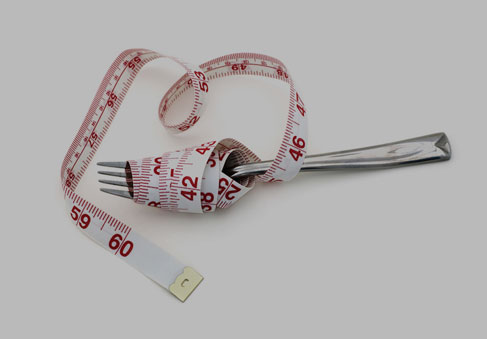When it’s time for weigh-ins or fitness tests, have you ever resorted to extreme or unhealthy measures such as strict dieting or excessive exercise to make weight? Or maybe you know someone who has. Chances are, you know of the great lengths some people will go to in an effort to lose weight in time for a weigh-in. These practices might seem normal, or even optimal, but they don’t offer a long-term weight solution, and they do pose a threat to your health and performance.
What is disordered eating?
Disordered eating describes irregular and unhealthy eating behaviors. Some of these behaviors are frequent dieting, fasting, or purging. In the military, these practices are often used as weight-control strategies or to meet fitness standards. Disordered eating might also occur when someone experiences a disturbance in their body image or struggles with an unhealthy relationship with food. Disordered eating isn’t the same as clinically diagnosed eating disorders. The diagnosis of disorders such as binge-eating disorder, bulimia nervosa, or anorexia nervosa all require specific diagnostic criteria. However, irregular eating behaviors are still cause for concern because they can lead to chronic struggles with disordered eating and possibly a diagnosable eating disorder.
Why disordered eating can be a problem
You might think there’s no harm in relying on drastic measures to make weight, even if it’s just once in a while. Unfortunately, even occasional patterns of disordered eating can impact your body’s functions and physical performance because your body isn’t consistently getting the nutrients it needs. Disordered-eating behaviors can lead to poor nutrition and short- and long-term health effects.
When you deprive your body of needed fuel and nutrients, you often feel weak, hungry, tired, or light-headed. This certainly isn’t ideal if you’re trying to pass a fitness test or stay focused at your job. If you continue to restrict your food intake, you might also experience dehydration, electrolyte imbalances, digestive problems, decreased bone density, or for women, menstrual irregularities. In addition, underfueling can increase your injury risk and contribute to conditions such as relative energy deficiency in sport (RED-S).
Not only are your physical health and performance affected by disordered eating, but so is your mental health. Poor nutrition and irregular eating behaviors can impact your cognitive performance, mood, emotions, and your overall mental well-being.
What to look out for
Disordered-eating behaviors aren’t always obvious, but it’s important to look out for warning signs if you or someone you know is struggling. A few of the many signs to look out for are:
- Frequent dieting or extreme dietary restrictions
- Obsession with weight or body image
- Avoiding food because you’re worried about how it might affect your weight or shape
- Preoccupation with counting calories or grams of carbs, fat, or protein
- Weight fluctuations
- Laxative misuse or use of diet pills, cleanses, or detoxes
- Overuse of protein supplements, meal replacements, or other dietary supplements
- Mood swings, stress, or anxiety when eating
- Ammonia smell after workouts
- Dizziness or fainting
- Muscle weakness or excessive cramping
- Longer recovery times between workouts
Disordered eating in the military
Disordered eating is a growing concern in the military. Some evidence suggests up to one-third of Service Members engage in unhealthy weight-control behaviors. Although the number of formal eating-disorder diagnoses between military and civilian populations is similar, rates in the military appear to be rising. Service Members also report a high frequency of certain weight-control practices such as laxative use and excessive exercise. Actual numbers are thought to be higher than reported because some people try to hide their condition for fear of stigma or negative consequences.
Disordered eating can develop for a number of different reasons, but some aspects of military life seem to increase the risk. The emphasis on weight and fitness standards, regimented lifestyles, combat exposure, and trauma are all potential risk factors. Mental-health conditions—post-traumatic stress disorder, depression, and anxiety—are also linked to irregular eating behaviors. Just because you experience any one of these risk factors doesn’t mean you’ll develop disordered-eating habits, but they can certainly play a role.
How to get support
If you recognize signs of disordered eating in yourself or in someone you know, it’s important to get professional help. You might be hesitant to seek help because you’re embarrassed or worried you might hurt your military career, but your physical and mental well-being are at stake. Early treatment can prevent disordered eating from getting worse and help you recover faster.
Start by confiding in someone you trust and feel comfortable talking to. A counselor or trusted provider at your local medical treatment facility can help you. You can also reach out to the National Eating Disorders Association, and they can guide you toward the resources and support you might need. If you’re not ready to open up, there are self-help options—such as workbooks or smartphone apps—you might find helpful too. These are not replacements for professional treatment, but they can help you start your journey toward recovery.
If you want to lose body fat, gain muscle, or eat better overall, work with a Registered Dietitian (RD) to develop a healthy and sustainable eating pattern to meet your goals. An RD can also help you create and foster a healthier relationship with food.
Disordered eating can threaten your health and might prevent you from performing at your best. Be aware of the warning signs and take advantage of available resources if you or someone you know needs help.
